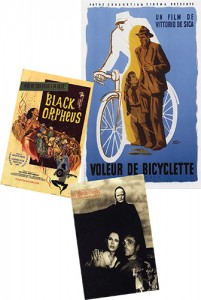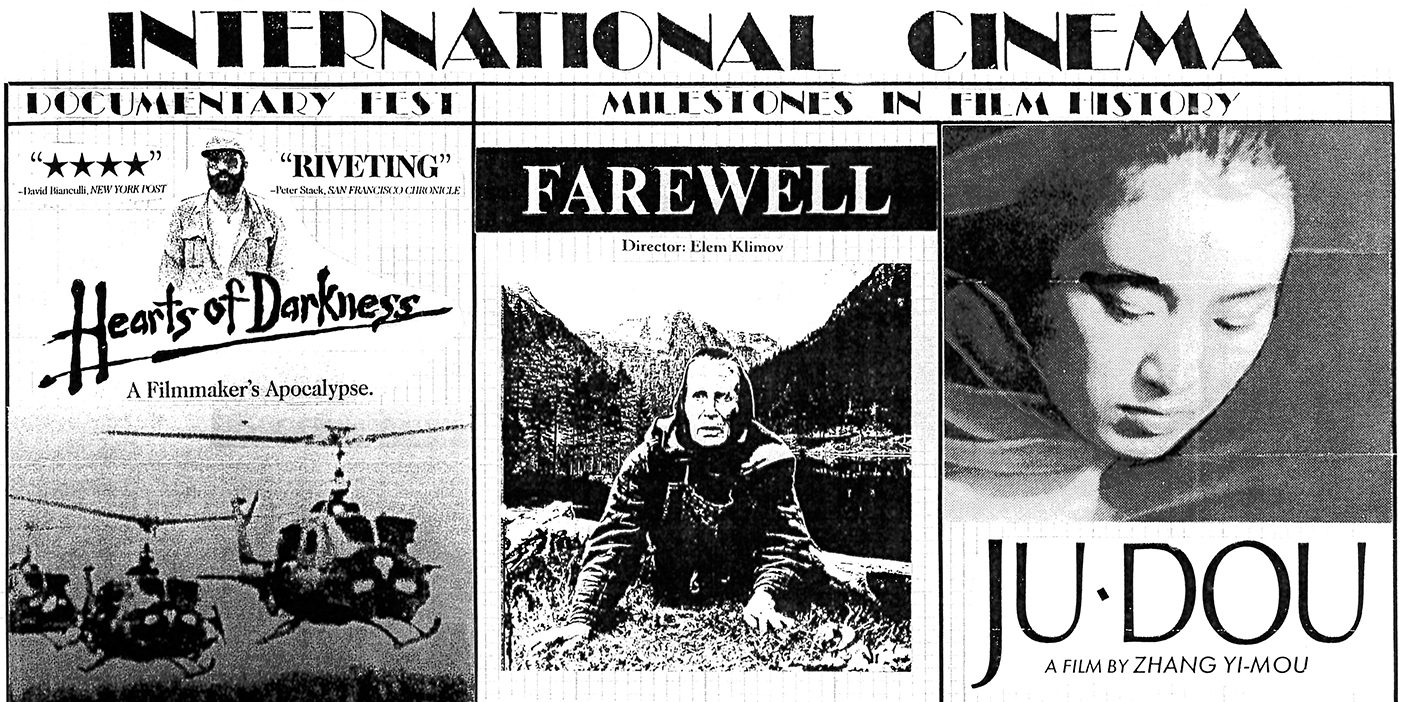From its humble beginnings in any available classroom to its current home in a custom-designed auditorium, BYU’s International Cinema has shown hundreds of films over the last four decades. The movies, produced all over the world, are handpicked by faculty members to support BYU programs, from foreign language to film. “The goal is to reinforce what people are learning in the classroom with some examples of the culture,” says International Cinema codirector and Chinese professor Steven L. Riep. So which films are shown again and again? Check out International Cinema’s five most-shown films and why they’ve become International Cinema staples.
1. Bicycle Thieves
Directed by Vittorio De Sica

What films have been shown the most in BYU’s International Cinema? These movie posters are a hint. See which one tops the list.
Italian, 1948
Synopsis: In postwar Italy, a father and son search for a stolen bike, the source of their livelihood. One Honor, Among Many: 1950 Golden Globe for Best Foreign Film. International Cinema Says: Character portrayal so real, you forget they’re acting.
2. Black Orpheus
Directed by Marcel Camus
Portuguese, 1959
Synopsis: The Greek myth of Orpheus and Eurydice set during Carnival in Rio de Janeiro. One Honor, Among Many: 1960 Academy Award for Foreign Language Film. International Cinema Says: A film most interested in using art to tell a story.
3. Ballad of a Soldier
Directed by Grigori Chukhrai
Russian, 1959
Synopsis: A young Russian soldier
takes a leave and falls in love before returning to the front lines during World War II. One Honor, Among Many: 1960 Special Jury Prize at Cannes Film Festival. International Cinema Says: A poignant, slower-paced film on the trauma of war and lost opportunities. Arresting images, not dialogue, do the heavy lifting.
4. The Seventh Seal
Directed by Ingmar Bergman
Swedish, 1957
Synopsis: Returning from the Crusades, an exhausted knight encounters black-robed Death and challenges him to a game of chess. One Honor, Among Many: Ranked eighth in Empire magazine’s “100 Best Films of World Cinema” in 2010. International Cinema Says: Many images from this classic film have become iconic. Approach it as an artistic film.
5. Woman in the Dunes
Directed by Hiroshi Teshigahara
Japanese, 1964
Synopsis: A widow spends her days digging to save her house from quicksand in this film on the human existence and the meaning of freedom. One Honor, Among Many: 1964 Special Jury Prize at Cannes Film Festival. International Cinema Says: An unusual film, but a must-see in Japanese cinema. This film will give you things to write down and think about later.
Note: Many of these films have mature themes and styles.
Video: Want more of the best of world cinema? Watch International Cinema directors past and present (all seven of them) share their favorite international films of all time at magazine.byu.edu/InternationalCinema.









